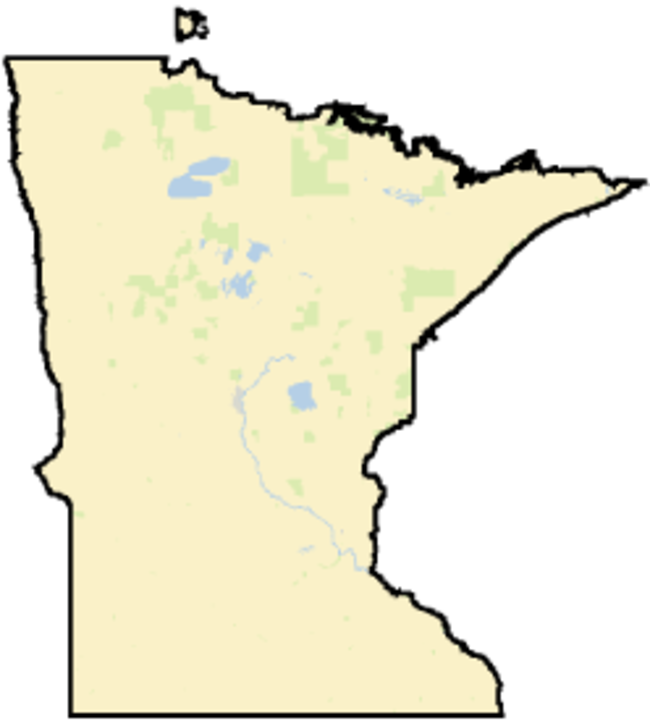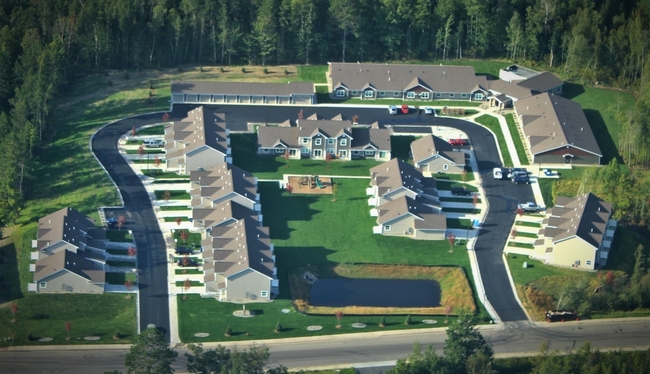Collaboration knits funding and partnerships for significant housing project
Core housing issues addressed
- Housing stock and affordability
- Housing finance
Housing challenges
A lack of affordable rental housing in Grand Rapids affects not only the abilities of local employers to find willing workers but also the lives of those in greatest need. A 2014 housing study showed an overall vacancy rate of 1.4 percent in Grand Rapids, with nearly a zero percent vacancy rate in subsidized rental units.
Diane Larson, executive director of Itasca County Housing and Redevelopment Authority (HRA), wrote “This low vacancy rate increases the difficulty for our hardest to serve populations, such as those with a disability, mental illness, poor credit, or criminal history to find a rental unit. When landlords can rent their properties 10 times over, these populations tend to not be offered housing.”
Housing success story
Beacon Hill is a 48-unit facility build on an eight-acre parcel of land in Grand Rapids. The mix of units includes 28 two- and three bedroom townhouses with income restrictions for tenants and 20 supportive housing units. The supportive units include 10 that house residents with high levels of support needs. The remaining 10 are reserved for formerly homeless residents, typically needing less support. A staff person from Northland Counseling Center is available on-site 24 hours per day to support residents who meet eligibility requirements.
The remaining 28 units in the development are two-to-three bedroom townhouses, of which 12 have a Project-Based Voucher rental subsidy. Since units have income restrictions, the final rental rates are a viable option for low-income families. Whereas typical market rates for a similar two-bedroom unit runs $800+ in the area, the $635 monthly rent makes a big difference. Diane Larson, with the Itasca County HRA, said “We also wanted to be able to address a lower income than just a straight tax credit project so the HRA infused rental assistance into the project both through our Continuum of Care (CoC) funded permanent supportive housing rental assistance (formerly called Shelter Plus Care) and dedicated 12 project-based vouchers to the townhome units. So we not only addressed different populations that needed housing, we also address some very low-income household/individual with incomes that would not be able to even afford tax credit rents.”
Project partnership
The main story behind the Beacon Hill development is the formation of partnerships between agencies and organizations. Seven organizations joined the Housing Institute offered through Minnesota Housing Partnership. The institute process led them through steps to better identify a clear vision for their project and research options, as well as provided them with the time to build local support. The team included Grace House, Kootasca Community Action, Minnesota Department of Corrections, Itasca County Probation, Northland Counseling Center, Inc. Itasca County Health & Human Services, and Itasca County HRA. The durability of the partnership is evident in its continued involvement with one another. Three of the seven agencies are working together on a new initiative on rent assistance for past offenders being released from correctional facilities.
The active involvement of both city and county government was key to the success of the project. Not only were both entities supportive of their employee’s involvement in the project, but both the City of Grand Rapids and Itasca County played a significant role in property acquisition. The county agreed to sell the eight-acre tax-forfeited property at the tax assessed value. The city also waived all back-owed fees and interest on its tax assessment in return for the HRA paying all back-owed taxes. This financial arrangement was coupled with proper zoning for multi-family housing and the property was obtained.
Even with a strong partnership of local governments and agencies, the project still generated controversy. A local opposition group formed to derail the project, based on arguments against potential residents. However, a concerted educational effort by the partners won out.
Programs and financial resources
The Beacon Hill project, which opened in 2016, cost $9.4 million to develop. The substantial funding necessary for this scale of development came from many funding sources, including a Blandin Foundation grant through the Greater Minnesota Housing Fund. This money was dedicated to a supportive services fund. The largest funding mechanism, however, came through Housing Infrastructure Bonds (HIB) available to support housing projects in 2014 paired with 4 percent tax credits through the Low Income Housing Tax Credit (LIHTC). The programs were available through the Minnesota Housing Finance Agency.
Who can you follow up with to learn more about project details?
Diane Larson, executive director, Itasca County Housing and Redevelopment Authority
Phone: 218-326-7978, ext. 111 | Email: diane@itascacountyhra.org
- Interview with Diane Larson, fall 2017.
- Itasca County housing team rallies around supportive housing, celebrates 'true collaborative', Minnesota Housing Partnership.
About the MN Rural Housing study
Small rural communities in Minnesota face persistent housing challenges. In 2017, the state’s regional development organizations (RDOs) identified housing as a top learning focus and called for the creation of case studies that highlight creative solutions to persistent housing issues in our smaller communities. This project is a collaboration of the Extension Department of Community Development and the Center for Small Towns.
Reviewed in 2018



